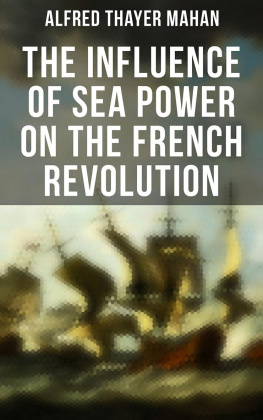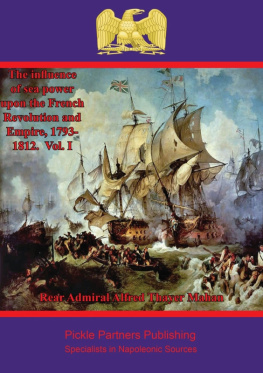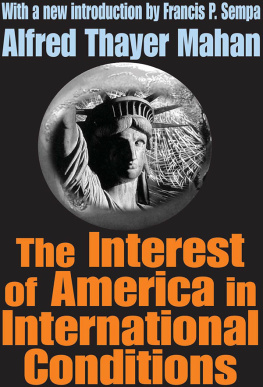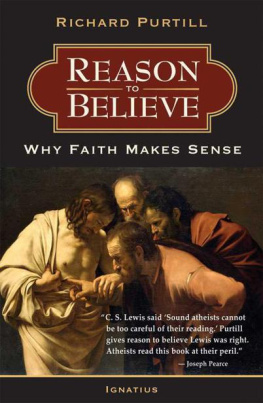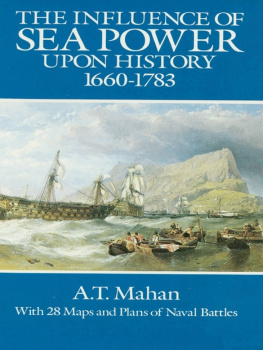GOD AND
SEA POWER
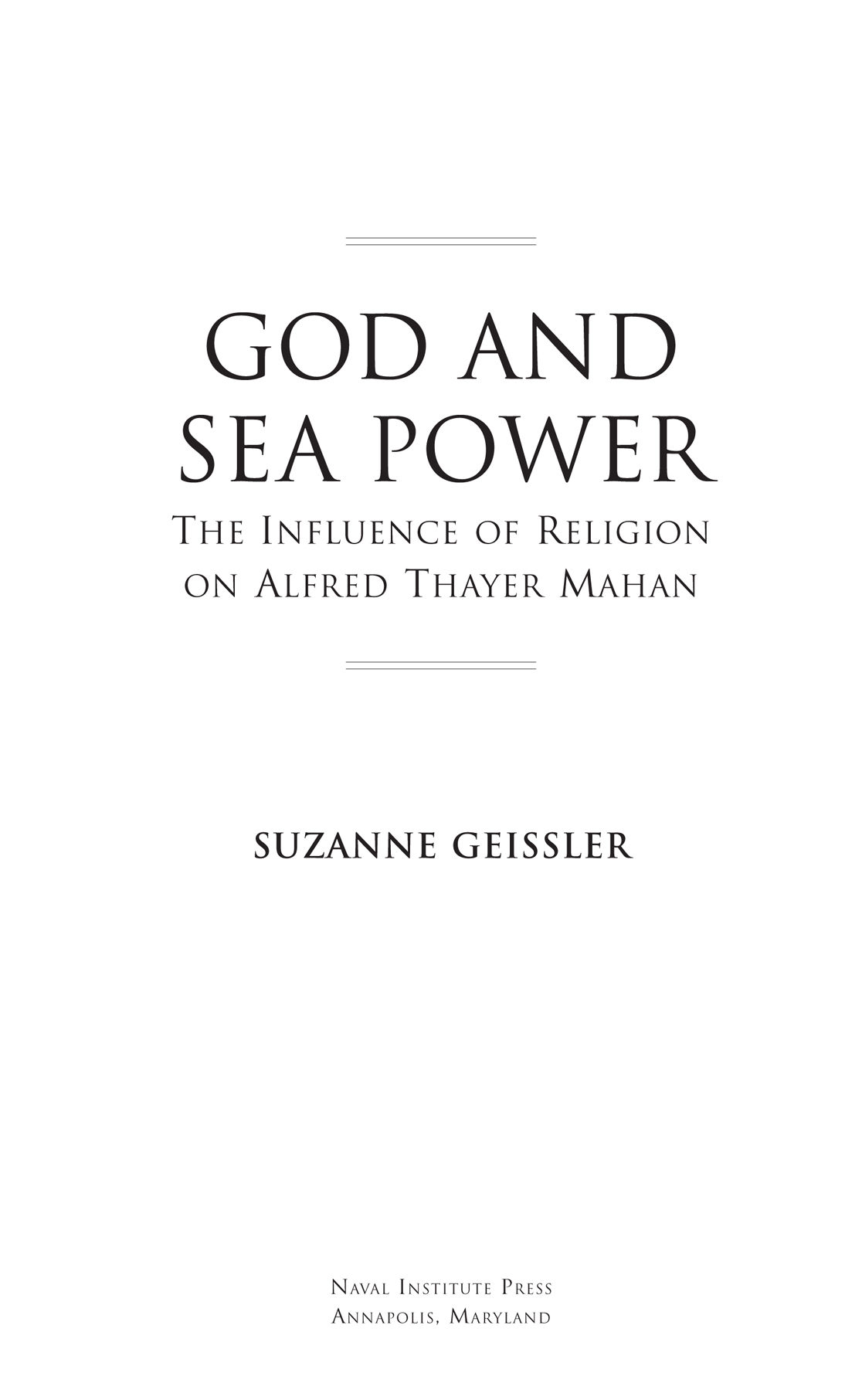
This book has been brought to publication with the generous assistance of Marguerite and Gerry Lenfest.
Naval Institute Press
291 Wood Road
Annapolis, MD 21402
2015 by Suzanne Geissler
All rights reserved. No part of this book may be reproduced or utilized in any form or by any means, electronic or mechanical, including photocopying and recording, or by any information storage and retrieval system, without permission in writing from the publisher.
Library of Congress Cataloging-in-Publication Data
Geissler, Suzanne.
God and sea power: the influence of religion on Alfred Thayer Mahan / by Suzanne Geissler.
1 online resource.
Includes bibliographical references and index.
Description based on print version record and CIP data provided by publisher; resource not viewed.
ISBN 978-1-61251-844-2 (epub) 1. Mahan, A. T. (Alfred Thayer), 1840-1914Religious life. 2. United States. NavyBiography. 3. Naval historiansUnited StatesBiography. I. Title. II. Title: Influence of religion on Alfred Thayer Mahan.
E182.M242
359.332092dc23
[B]
2015024058

 Print editions meet the requirements of ANSI/NISO z39.481992
Print editions meet the requirements of ANSI/NISO z39.481992
(Permanence of Paper).
23 22 21 20 19 18 17 16 15 9 8 7 6 5 4 3 2 1
First printing

TO THE MEMORY OF GRAHAM

CONTENTS
Guide
T his project came about because of the convergence of two of my academic interests, American religion and naval history, in the person of Alfred Thayer Mahan. Like Mahan, I am an active Episcopal layperson. When I first read about Mahan, just for my own interest, I was intrigued by his religious faith and wondered why hardly anyone paid any attention to it when it clearly played such a major role in his life and thought. And the few who did pay attention seemed to lack even the most rudimentary knowledge of the Bible, church history in general, and the Episcopal Church in particular. I put aside other projects and pursued Mahan for the next seventeen years. I was fortunate early on to connect with two distinguished naval history scholars, John B. Hattendorf, Ernest J. King Professor of Maritime History at the United States Naval War College, and Jon T. Sumida, professor of history at the University of Maryland. Both of them believed that a study of Mahans religion was long overdue and they encouraged me to pursue it. I am happy to acknowledge my tremendous debt to them and to thank them for all the assistance they rendered along the way. John Hattendorf sent me a number of books, pamphlets, and catalogs from the Naval War College Press that got me started. Jon Sumida also read the entire first draft and gave me a detailed critique that made the revised version much better. I also thank my dear friend Ruth Richardson Ragovin, who read the first draft and made many helpful suggestions. With a doctorate in theology and many years experience in the field of scholarly publishing, she was the ideal person to take on this task, which she graciously agreed to do.
Two other historians to whom I owe special thanks are Robert Bruce Mullin, professor of Modern Anglican Studies at General Theological Seminary and historiographer of the Episcopal Church, and Wayne Kempton, archivist of the Episcopal Diocese of New York. No one knows as much about the nineteenth-century Episcopal Church as Bruce Mullin, and he graciously answered many queries from me about Milo Mahans career at General Theological Seminary and his mentoring of his nephew Alfred. Likewise, Wayne Kempton answered many questions from me over the years, helped me track down obscure sources, and even solved some mysteries.
It is also my pleasure to thank Evelyn Cherpak, now retired, but for many years the archivist at the Naval War College Library. Apart from assisting me in accessing the Mahan Papers, she helped me in numerous ways, including arranging the details of my trip to Newport. In later years she was always a most congenial dinner companion at the numerous naval history conferences we attended.
I cant even begin to list all the ways Adam Nettina, my editor at the Naval Institute Press, helped me. I have never worked with an editor as competent and enthusiastic as Adam. His suggestions and corrections made for a much improved manuscript. He also willingly took on many tedious jobs in readying the manuscript for production so I would not have to do them myself. Thank you, Adam, for everything.
So many people at libraries, historical societies, churches, schools, and archives lent assistance along the way. It is my pleasure to thank them now: George Maxwell, Church of the Atonement, Quogue, N.Y.; Bruce Shaw and Jordan Sleeper of the Church of St. John the Evangelist, Newport, R.I.; David Wigdor at the Library of Congress; Isaac Gewirtz and Laura Moore of the General Theological Seminary Library; Judith Sibley and Suzanne Christoff of the U.S. Military Academy Library; Marlana Cook of the U.S. Military Academy Museum; David DOnofrio and Barbara Manvel at the U.S. Naval Academy Library; Janis Jorgensen of the U.S. Naval Institute photo archives; Scott Reilly of the Naval War College Library; Robert Doane of the Naval War College Museum; Ted Camp of St. James School, Hagerstown, Md.; Jamie Smith of St. Pauls School, Baltimore; Brig. Gen. Thomas Griess, USA (ret.), biographer of Dennis Hart Mahan; Julie Greene of the Quogue Historical Society; and the Reverend James Elliott Lindsley, Episcopal priest and historian.
I would also like to thank the Naval Institute Press, the Society for Military History, and the Historical Society of the Episcopal Church for permission to use material originally appearing in, respectively, New Interpretations of Naval History, the Journal of Military History, and Anglican and Episcopal History.
My colleagues in the History Department at William Paterson University also deserve my thanks for their support and encouragement during the many years I worked on this project and for asking the questions that needed to be asked. It is a privilege to be a part of such a supportive and collegial department.
My biggest debt is to my beloved husband Graham, who did not live to hold the book in his hand but did know that it was going to be published. This book is dedicated to his memory.
Note on style: All Bible quotations are from the Authorized (King James) Version of 1611, which of course is the version Mahan used.
T hose who toil in the field of naval history are usually familiar with the oft-quoted remark of Henry L. Stimson that the Navy Department inhabited a dim religious world in which Neptune was God, Mahan his prophet, and the United States Navy the only true Church.
He was the most influential American author of the nineteenth century. Two buildings have been named after him, one at the U.S. Naval Academy in Annapolis, Maryland, and one at the U.S. Naval War College in Newport, Rhode Island. Four United States warships have been named after him, DD 102/DM 7, DD 364, DLG 11/DDG 42, and DDG 72. Three schools were named in his honor as well, the elementary and high schools at the former Naval Air Station at Keflavik, Iceland, and the mission school at Yangchow, China. Even the adjectival form of his nameMahanianis a fixture in the vocabulary of naval historiography.
Next page




